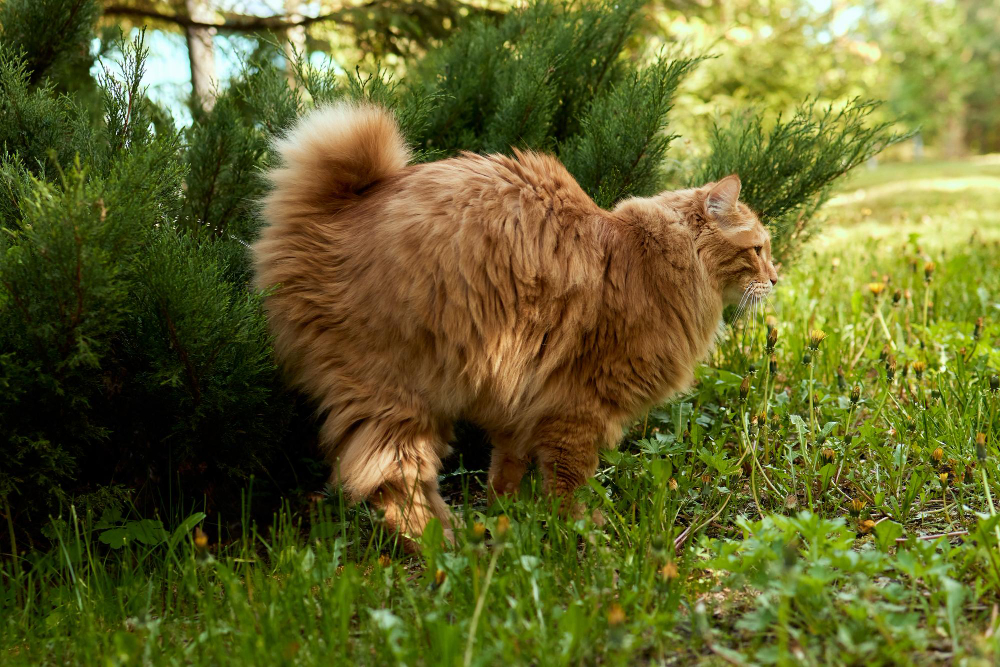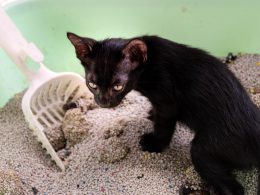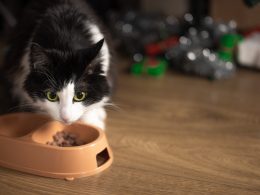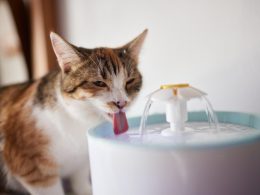Litter boxes are a must-have item for any indoor cat. They not only give a limited and defined spot for a cat to urinate and defecate, but they also make it simple for the cat’s owner to clean up after them.
Despite their apparent benefits, litter boxes are vital to a cat’s emotional health and general wellness. Following a few basic litter box recommendations, cat owners may help prevent various problems in their cats.
A litter box should be substantial enough to allow a cat to evacuate its waste completely. Many sizes will be available in a well-stocked pet store. When choosing a litter box, keep your cat’s size in mind. Kittens, for example, may be able to get by with a smaller box at first, but a giant breed of cat, such as an adult Maine Coon, will require a much larger box. Also, because its hind end hangs over the edge of the box during usage, a cat may deposit its waste matter next to the box if it is too tiny.
Your cat must be comfortable going into and out of its litter box, in addition to its size. Some boxes have very high edges, making it difficult for elderly, arthritic cats to climb into them. If your cat is suddenly refusing to use the litter box because it is too difficult for him to get into it, be sure it isn’t because it is too difficult for him to climb into it.
Can I Keep a Cat Without Litter Box?
If you are keeping an indoor cat at home, it’s a necessity. However, not having a litterbox will only bring a lot of bad news to your home. Cats, unlike dogs, require regular access to their “restroom.” This means you’ll need to provide your cat with continual access to the outside or keep at least one litter box. In addition, when a cat is forced to ‘hold it,’ it can cause significant health problems. And, often, they’ll find another place to go.
What Happens If You Don’t Have a Litter Box?
If you don’t have a litterbox at home, your cat will still relieve itself in any available space that it favors. Cats are still wild at heart, so they will eventually relent and relieve themselves in dark corners and other favorable spots where they feel secure enough to do it.
Cats and dogs will not hold it in for you, and they don’t know things like the mattress and the living room couch. So wherever it’s doable, it’s doable. This is the primary reason litterbox training is crucial for cats: you don’t want them doing number one and number two wherever they like.
How Long Can a Cat Go Without Using a Litterbox?
Every cat is unique when it comes to potty habits. Depending on your cat’s age, water consumption, nutrition, and other factors, including current medical issues, medication, heat, humidity, and stress, normal peeing can range from two to six times per day. Most cats, on the other hand, poop at least once per day. Even if your cat eats and drinks appropriately, she can go for up to 48 hours without peeing. Some cats may not urinate for up to 72 hours after neutering or operation.
Meanwhile, a younger kitten should urinate 4 to 6 times each day, so take her to the doctor if she doesn’t do so within 24 hours. A cat may comfortably keep it in for 24 to 36 hours when it comes to pooping. Schedule an appointment with her veterinarian if it lasts 48 to 72 hours.
Because of the toxic accumulation in your cat’s system, failure to pee or defecate increases the danger of damage; toxic levels in your cat’s system might make her sick and harm her critical organs. Worse, it might result in death.
What Can I Use for My Cat If I Don’t Have a Litter Box?
The actual litterbox is just a pan with high enough walls so the litter doesn’t spread across your space. The real challenge here is determining what you can use as an alternative for the litter itself or the material/substrate that absorbs smells, urine, and feces. Luckily, there are many viable alternatives for commercial cat litter:
Old Newspapers
Newspapers and junk mail are the first two sources of information.
You may use your old newspapers and junk mail to produce kitty litter instead of letting them pile up before sending them to the recycling center. Shred some paper, lay it in the litter box, and combine it with water and dish soap.
Drain the mixture after allowing the paper, water, and dish soap to settle for a few minutes to remove the dish soap. Then, liberally sprinkle baking soda over the mixture and let it out to dry in the sun. It’s done when it turns dry and crumbly.
Using a paper shredder to make this sort of litter is considerably easier and faster, and the litter also appears more consistent. If you don’t have a shredder, you can shred the paper using your hands or scissors.
Wood Shavings
Collect all leftover wood shavings to use as litter if you perform any woodworking at home or know someone who does. Otherwise, a timber firm might provide you with wood shavings for a low price or perhaps for free. Place some wood shavings in your litter box at a depth of around 3 inches after you have them.
The natural fragrance of wood shavings can help cover the strong ammonia smell created by cat pee.
Sawdust
Sawdust may be collected from your woodworking area, a timber firm, or even a wood furniture manufacturer, much like wood shavings. Again, consistency is the best to use sawdust with a course rather than powdery.
A word of caution regarding the use of sawdust as cat litter: sawdust is a recognized human carcinogen, according to scientists at Cancer.org, which implies it might be detrimental to cats as well, but this has never been verified.
If you have an option between wood shavings and sawdust, select the shavings to be safe. Then, you’ll have peace of mind knowing you’re not endangering your cat by producing your cat litter.
Wood Pellets
Many homeowners nowadays use wood pellets to heat their houses. These pellets are soft and lightweight and created from ground-up wood. They’re a fantastic alternative to kitty litter and can be found at most home improvement and hardware stores.
Pellets have the benefit of being highly absorbent and natural smelling, so they will soak up your cat’s pee and hide its disagreeable odor. Just make sure you’re using pellets that haven’t been chemically altered.
Sand
Even though it might be dirty, sand is a fantastic cat litter. Sand for use in children’s sandboxes may be purchased from hardware stores. Large quantities of sand are also available at landscaping supply stores. Put some sand in your litter box and add baking soda to help absorb odors if you wish to use it.
Use a rubber mat under your litter box to keep the mess at bay and make clean-up easy. You may use cardboard or any other flat material that can be thrown away or washed occasionally if you don’t have a rubber mat.














